The cycle of violence and armed conflict which marked the Partition of the Indian subcontinent did not come to an end in 1947 because, as we know, another violent event took place in 1971 with the disintegration of Pakistan. Following a phase of violence and bloodshed, East Pakistan emerged as a new and separate state, Bangladesh. If religion was a major cause of the Partition of the subcontinent, the disintegration of the first post-colonial state, Pakistan, was born out of ethnic conflict.
While discussing the violent legacy of Partition a few questions come to mind as we pursue a prudent approach of analysis: how does the violent characteristics of the Partition of 1947 shape the mindset of the people of divided India — the states of India and Pakistan? How does hatred and animosity triggered in 1947 deepened the level of mistrust, suspicion, paranoia and ill-will between these two major countries of South Asia? How can the bloody legacy of 1947 can be managed and replaced with a futuristic and forward-looking approach for peace, stability, progress and prosperity in South Asia?
The freedom at midnight granted by the British imperial power to their colony on August 15 came at a very heavy price. The manner in which Partition took place while dividing Bengal and Punjab is marked historically as much as the eve of Partition as it was an eve of bloodletting.
Is it possible to manage the blood-stained legacy of Partition?
In an illuminating article entitled “The Troubled History of Partition” published in Foreign Affairs (New York) 1997 Radha Kumar records that, “the riots that followed in 1947-48 left more than a million people dead in six months and displaced upwards of 15 million.” (This article was published on the occasion of 50th anniversary of Partition.)
In Punjab and Bengal, particularly, unruly and armed mobs questioned why the British authorities handing over the reins of power to the newly-formed governments failed to take precautionary measures to protect the lives of innocent people and plunged the two territories in a vicious cycle of violence and bloodshed.
In their article “The Tale of Two Partitions” published in Economic and Political Weekly, (November 3, 2007), S. Tabraz and D. Sambandhan write: “Corresponding to the collective memories of overwhelming pain and torture, the Partition of 1947 in the subcontinent is a singular event the scale of which remains unprecedented in human history.” And for the 10 million who lived through Partition, “to their children and grandchildren the term Partition triggers off traumatic memories but these memories, in an unusual paradox, also end up in tension of opposites.”
In its essence, the violent and bloody legacy of Partition is a major cause of deepening the level of animosity between India and Pakistan. Healing the wounds of Partition, even after 70 years, remains an uphill task and a formidable challenge because instead of pursuing a forward-looking approach for peace and development, tales of Partition continue to poison young minds about what had happened in 1947 and beyond.
What motivated the followers of different religions, previously coexisting in undivided India for centuries, to take up arms against each other and inflict inhumane acts upon their neighbours? What could be the reasons for the grotesque massacre of Muslims, Hindus and Sikhs?
Three reasons could be given as the motivating factors. Firstly, neither the Congress nor the Muslim League had visualised the implications of the division of Punjab and Bengal. Since the majority of communal riots took place in Punjab and Bengal, the two parties — Congress and the Muslim League — which had agreed to the June 3 plan should have taken steps to ensure smooth migration of people across the border. When reports of killings and looting reached the disturbed areas of Punjab and Bengal, retaliation and counter-retaliation targeted the vulnerable population of Hindus, Muslims and Sikhs — particularly the women. In Punjab, slogans arose of avenging the brutal killings of those belonging to their religious community and abductions of their women as booty.
“Punjab accumulated most of the refugees and nearly all the deaths from August to October 1947 as the province was convulsed by an intense communal civil war involving some of the largest ethnic cleansing campaigns in history,” writes Chaim D. Kaufmann in his article “When All Else Fails: Ethnic Population Transfers and Partitions in the Twentieth Century”, published in the academic journal International Security (Vol. 23, 1998). And in view of the violent legacy of Partition, it is Punjab that needs to be transformed — a jingoist and aggressive mindset still prevails on both sides of the Wagah border.
Secondly, the massacre of people following a different religion which led to the depopulation of Hindu and Sikh populations from the Pakistani Punjab and the Muslim population from the Indian Punjab is a sad reality. However, the motivating factor of eliminating people professing a different religion was not that obvious in Bengal where a sizeable Muslim minority in West Bengal (India) and in East Bengal (Pakistan) lived even after Partition. It means the level of intolerance remained high in Punjab than in Bengal. That is the reason why even 70 years after Partition communal and religious schism still exists in Punjab.
Finally, greed, lust for money and settling old scores also motivated those who went on a rampage on the eve of Partition and after. Looting valuables from people crossing the border and in their homes and shops by violent mobs is now part of history but indeed left indelible scars on the minds of the many.
As Tabraz and Sambandhan point out, the fourth generation of Indians and Pakistanis, although not exposed to the violence and destruction of 1947 themselves, are profoundly affected by the lived experience of their ancestors.
In view of the violent legacy of Partition, it is Punjab that needs to be transformed — a jingoist and aggressive mindset still prevails on both sides of the Wagah border.
History textbooks and members of family re-tell their version of events which caused unprecedented sufferings to those who had to migrate to a new homeland leaving behind their homes, properties and valuables.
If the Muslim minorities living in India migrated to Pakistan, it was by choice because most of them had struggled for a new Muslim homeland during the Pakistan Movement. However, that homeland was not to be established in provinces where they were in a minority but in the Muslim-majority states of northwest and northeast.
Whereas Hindus and Sikhs, who migrated from the newly-created state of Pakistan to India, did so not because of choice but because of compulsion. They didn’t struggle for the creation of Pakistan unlike the Muslims of India. They left for India reluctantly by leaving their land, homes, properties and valuables thus taking with them strong ill will and hatred against the new state.
Mushirul Hasan, an Indian Muslim writer in his article “Memories of a Fragmented Nation: Revisiting the Histories of India’s Partition” published in Economic and Political Weekly (October 10, 1998), argues: “If the histories of Partition are to be rewritten, there are several reasons why we must judiciously draw upon the intellectual resources made available to us by such creative writers.
“They expose the inadequacy of numerous narratives on independence and Partition, compel us to explore fresh themes and adopt new approaches that have eluded the grasp of social scientists, and provide a foundation for developing an alternative discourse to current expositions of a general theory on inter-community relations.”
Oral history of Partition is something which describes how violence and its legacy impacted the lives of people. Writing a joint history of the Partition of the subcontinent by eminent historians of the two countries will go a long way in managing the legacy of violent Partition and salvaging the future generations of the two countries from the burden of history in the years to come. It will be a major challenge to change the discourse and provide a counter-narrative about the violent legacy of Partition because still in India and Pakistan there are elements who manipulate the religious sentiments of people and use the Partition bloodbath as a basis for sustaining confrontation in the region.
One innovative step, however, is the formation of the Partition Museum in Amritsar, the capital of the Indian Punjab. Composed of several galleries depicting the catastrophic images and relics of Partition, the museum is established with the assistance of the government of Punjab and is a first of its kind in India or Pakistan to document the agony of Partition, particularly the Partition of Punjab.
Similar projects about the Partition should also be initiated in India and Pakistan so that the present and future generations can learn from the agony and violence which dominated the landscape of the two newly established countries while also pursuing a forward-looking approach so as not to become victims of the past.
Needless to say, the younger generations of India and Pakistan must not come under the influence of those who in the last seven decades played with the feelings and emotions of those who suffered as a result of Partition. Because ultimately, what is at stake is the future of more than one billion people of South Asia.
The writer is Meritorious Professor of International Relations and former Dean Faculty of Social Sciences, University of Karachi. He can be reached at: amoonis@hotmail.com.
Published in Dawn, EOS, August 13th, 2017



















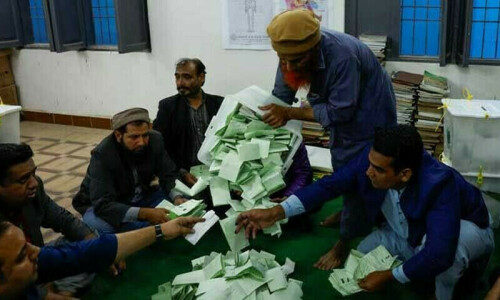
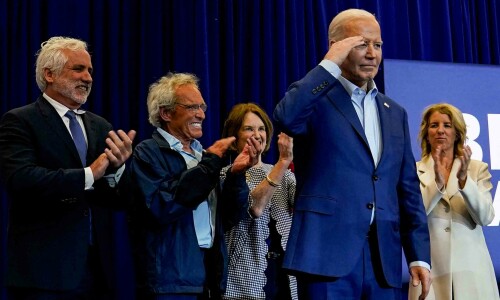
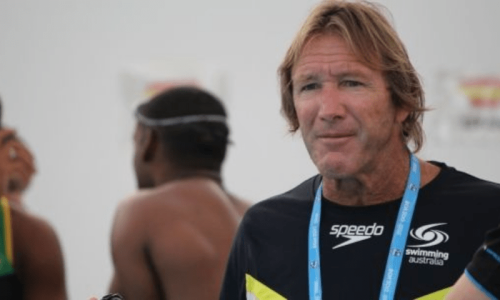






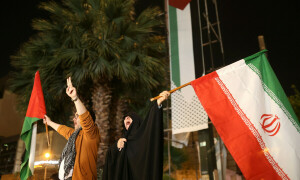
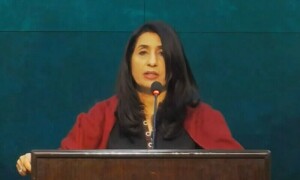
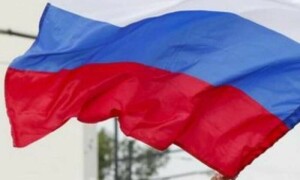
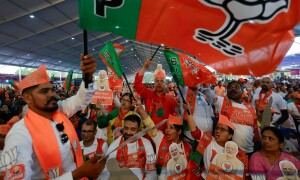
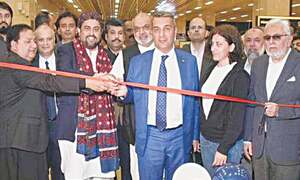


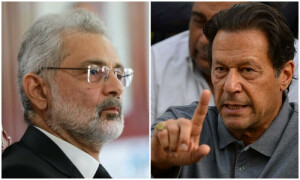













Dear visitor, the comments section is undergoing an overhaul and will return soon.